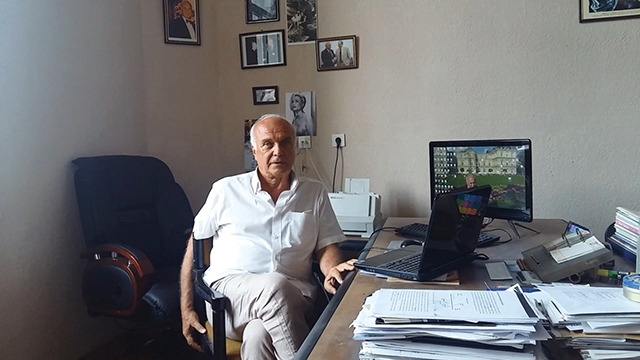Medical Disasters
Op-Ed
I had no idea that some unassumingly and discreetly laboring professionals in Georgia were so assiduously working on methods of investigating the vibrational properties of viruses – an issue which has acquired an overwhelmingly vital significance in our stressed-out days of globally recognized and thoroughly documented contagion.
I’ve read in the annals of medicinal content a doctoral quote which adds to my already ample knowledge of viral complications: ‘You can become an infectious carrier only four hours after coming into contact with the viruses’. How do we know this, and how believable can this statement be? To answer this question, I opted to follow the train of thought of Professor Paata Kervalishvili, the incumbent president of the Academy of Natural Sciences of Georgia, working in company with the powerful team of scientists of the Georgian Technical University, University of West Attica, and University of Paris-Sud.
Professor Kervalishvili says that the prediction, management and control of medical disasters constitute a solid part of medical planning and preparation. The term ‘disaster medicine’ first appeared in the medical lexicon in the post-WW2 era. It grew out of a necessitated care for military casualties, nuclear holocaust victims, survivors of natural disasters and recurring pandemics. The term became ubiquitous at the moment of creation of the medical response corps for disasters, which was in these days also set up in Georgia to glean and utilize first-hand information about the coronavirus hitting the world. The disaster and emergency medicine study group was created by medical enterprises and professionals of various countries, Georgia being a dedicated follower of this course of action.
Throughout this period, some tentative but incomplete medical responses to disasters and control of different epidemics made it increasingly apparent that emergency management organizations were in need of qualified physicians and certain relevant means when faced with a global surge of medical disasters. Unbelievably, Georgia demonstrated totally unexpected professional acumen and readiness to fight the current virus, briefly and popularly called Corona. The development of new treatments is greatly facilitated by an improved understanding of pathophysiology (disordered physiological process) of epidemic diseases. There is therefore a need to address the current knowledge gaps in disease aetiology (causation of disease) in order to support innovation in the development of evidence-based treatments.
As Kervalishvili points out, special attention must be focused on the integration of pre-clinical and clinical studies to identify the mechanisms that are common to a particular infectious disease. In this direction, the multidisciplinary development of the ability to detect individual virus particles has the potential to significantly impact healthcare since it could enable diagnosis at the earliest stages of replication. Simultaneous acquisition of the vibrational and electronic fingerprints of molecular systems of biological interest is very difficult to achieve with conventional optical means due to their rather poor sensitivity. Laser light can interact with molecular vibrations in the viral host system. Viruses assemble in the infected cells of humans, animals or plants. There are viruses which breed in the cell of the bacteria. Viruses spread in many different ways and each species of virus relies on a particular method of propagation.
I have tried to make the subject matter as simple as possible to understand but the medical specificity of the issue is not what I am trying to put forward in particular. The main conclusion I am trying to make here is that it was no accident that Georgia reacted to the likelihood of the disease proliferation with such elevated professionalism and extremely civilized grip. The presence of relevant medical personnel and gear in this country is guaranteed only by our national penchant to stay at the vanguard of human development by educating ourselves and engaging in world-level research into the most topical medical issues. One of the greatest prerequisites for this is the fact that the joint scientific venture, practiced by Professor Kervalishvili and his outstanding team of scientists, together with their colleagues of various nationalities around the world, has had an outstanding effect on the general qualification of Georgia’s medics and their readiness to momentarily react to a medical disaster of any magnitude, thus performing an indispensable job to the benefit of our people at the hardest moments of distress, at the same time serving the goals at a purely international level.
By Nugzar B. Ruhadze
Professor Paata Kervalishvili. Source: everybodywiki.com












